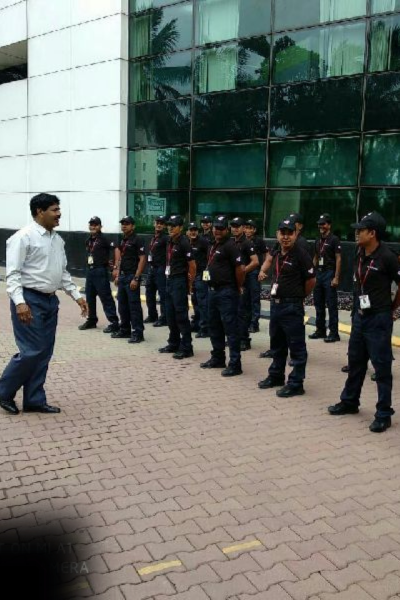
On-Call Service 24/7
+91-9953880005
Email Address
siona@sionasecurity.com
Great stress is laid on training of personnel before their deployment. The Company is ISO certified and it has its own well developed infrastructure which encompasses all aspects of training. Our professional and experienced team ensures that our workforce is completely equipped to carry out duties assigned to them, being polite, helpful yet firm.
Manpower for security is selected in accordance with the preference of the Clients. We make EXSERVICEMEN available to clients if they so desire. To ensure complete trustworthiness, police verification and varification by field officer of the entire workforce is ensured.

Job Analysis: Before initiating the selection process, it is important to conduct a job analysis to determine the specific skills, knowledge, and abilities required for the role. This analysis helps in creating an accurate job description and person specification.
Recruitment: Organizations employ various methods to attract potential candidates, such as advertising job openings, leveraging online job portals, networking, or utilizing recruitment agencies. The recruitment process may involve screening resumes, conducting interviews, and administering tests or assessments.
Interviews and Assessments: Interviews provide an opportunity to assess candidates’ suitability for the job. Behavioral and situational questions can help gauge their skills, experiences, and problem-solving abilities. Additionally, organizations may use aptitude tests, personality assessments, or practical exercises to further evaluate candidates.
Background Checks and References: Verifying the information provided by candidates, conducting background checks, and contacting references are important steps to ensure the authenticity of their credentials and work history.
Needs Assessment: Prior to designing and implementing a training program, it is essential to conduct a needs assessment. This involves identifying performance gaps, determining training objectives, and understanding the specific areas where employees require improvement.
Training Design: Based on the needs assessment, a training program is designed. It includes defining the learning objectives, selecting appropriate training methods (e.g., classroom training, e-learning, on-the-job training), and creating instructional materials or resources.
Training Delivery: The selected training methods are implemented to deliver the content and facilitate learning. This may involve classroom sessions, workshops, online courses, simulations, or a combination of different approaches.
Evaluation: After the training is completed, its effectiveness is evaluated to assess whether the desired outcomes have been achieved. Evaluation methods can include post-training assessments, surveys, feedback from participants, and analyzing performance improvements in the workplace.
Ongoing Development: Training should be viewed as an ongoing process. Continuous learning opportunities, such as workshops, seminars, mentoring programs, or access to online resources, can help employees stay up-to-date with industry trends and further develop their skills.

(+91) 99 53 88 00 05
Manpower for security is selected in accordance with the preference of the Clients. We make EX-SERVICEMEN available to clients if they so desire. To ensure complete trustworthiness, police verification and varification by field officer of the entire workforce is ensured.